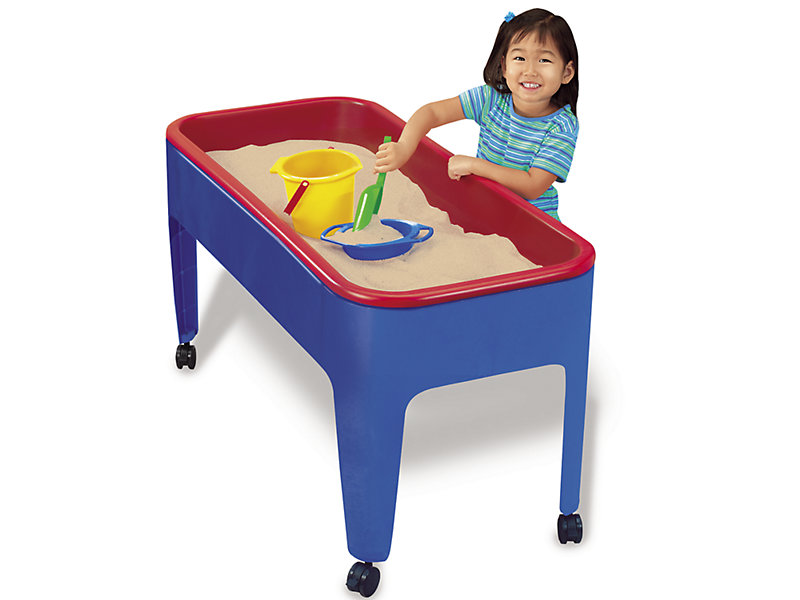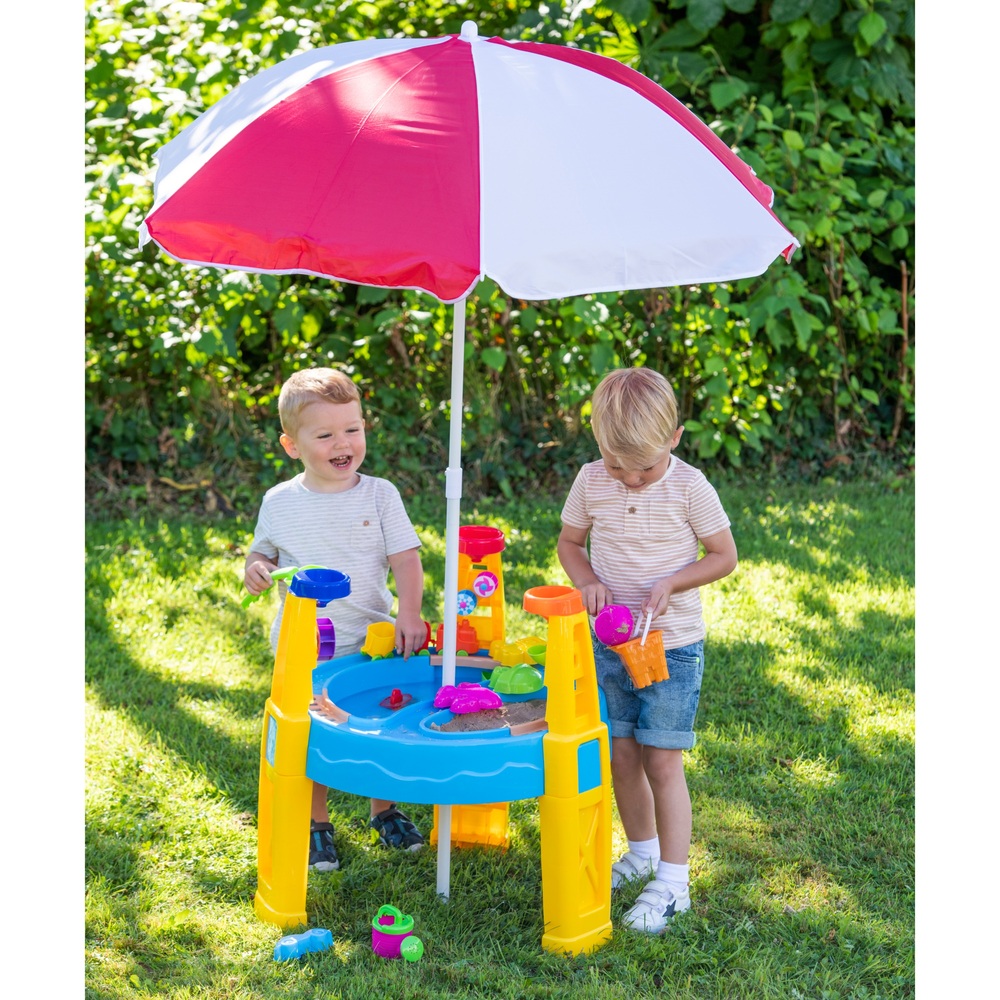Sand water tables are essential tools for early childhood education and development. These versatile play stations provide endless opportunities for children to explore, learn, and grow while having fun. Whether you're a parent, teacher, or caregiver, understanding the benefits and features of sand water tables can help you choose the right one for your needs.
In today's fast-paced world, finding effective ways to engage young minds is more important than ever. Sand water tables offer a hands-on learning experience that promotes sensory exploration, fine motor skills development, and social interaction. They create an inviting environment where children can experiment with different materials and textures, fostering creativity and imagination.
This comprehensive guide will explore everything you need to know about sand water tables, from their benefits and features to tips for choosing the perfect one for your space. We'll also discuss maintenance, safety considerations, and creative ways to maximize their educational potential. Let's dive in!
Read also:My Lipgloss Is Poppin Lyrics A Comprehensive Guide To The Iconic Song
Table of Contents:
- Biography of Sand Water Tables
- Benefits of Sand Water Tables
- Types of Sand Water Tables
- Key Features to Look For
- Safety Considerations
- Maintenance Tips
- How to Select the Right Table
- Creative Activities
- Frequently Asked Questions
- Conclusion
Biography of Sand Water Tables
History and Evolution
Sand water tables have evolved significantly over the years, transforming from simple wooden play stations to advanced, multi-functional learning tools. Originally designed as basic sandbox alternatives, these tables now incorporate innovative features that cater to various educational needs.
Today's sand water tables come in various shapes, sizes, and materials, offering both indoor and outdoor options. They are designed to accommodate different age groups and learning styles, making them versatile solutions for early childhood education.
| Feature | Details |
|---|---|
| Material | Plastic, wood, or metal |
| Size | Varies from 2x2 feet to 4x4 feet |
| Capacity | 20-50 gallons |
| Usage | Indoor and outdoor |
Benefits of Sand Water Tables
Sand water tables offer numerous advantages for children's development. These play stations promote:
- Sensory exploration: Encourages children to engage with different textures and materials.
- Fine motor skills: Develops hand-eye coordination and dexterity through play.
- Social interaction: Facilitates cooperative play and communication among peers.
- Cognitive development: Enhances problem-solving and critical thinking skills.
A study by the National Association for the Education of Young Children (NAEYC) found that sensory play significantly improves children's learning outcomes, making sand water tables valuable educational tools.
Types of Sand Water Tables
Indoor vs. Outdoor Options
When selecting a sand water table, consider whether you need an indoor or outdoor model. Indoor tables typically feature lightweight materials and drainage systems, while outdoor tables are more durable and weather-resistant.
Read also:Unveiling The Secrets Of The Witches Of Eastwick Cherry Scene
Some popular options include:
- Plastic tables with built-in storage compartments
- Wooden tables with adjustable water levels
- Modular systems that can be customized for specific activities
Key Features to Look For
When evaluating sand water tables, consider the following features:
- Material quality: Ensure the table is made from durable, non-toxic materials.
- Size and capacity: Choose a table that fits your available space and accommodates your group size.
- Drainage system: Look for tables with easy-to-use drainage options for convenience.
- Storage solutions: Opt for models with built-in storage for toys and accessories.
According to Consumer Reports, tables with adjustable height settings are particularly beneficial for accommodating children of different ages and abilities.
Safety Considerations
Ensuring Safe Play
Safety should always be a top priority when selecting and using sand water tables. Follow these guidelines:
- Supervise children during play to prevent accidents.
- Use non-toxic, child-safe materials in the table and accessories.
- Ensure proper drainage to prevent water accumulation.
- Regularly inspect the table for wear and tear.
The American Academy of Pediatrics recommends that all play equipment, including sand water tables, meet current safety standards and guidelines.
Maintenance Tips
Keeping Your Table in Top Condition
Proper maintenance ensures your sand water table remains functional and hygienic. Follow these tips:
- Empty and clean the table regularly to prevent mold and bacteria growth.
- Store accessories in a dry, secure location when not in use.
- Inspect the table for damage or loose parts monthly.
- Follow manufacturer instructions for cleaning and care.
Regular maintenance not only extends the life of your table but also ensures a safe and healthy play environment for children.
How to Select the Right Table
Choosing the perfect sand water table involves considering several factors:
- Intended use: Determine whether you need an indoor or outdoor table.
- Budget: Set a realistic budget and explore options within that range.
- Space constraints: Measure your available space to ensure the table fits comfortably.
- User age: Select a table that accommodates the age group of your users.
Researching reviews and comparing features from different manufacturers can help you make an informed decision.
Creative Activities
Maximizing Educational Potential
Sand water tables can be used for various educational activities:
- Science experiments: Explore concepts like buoyancy and volume.
- Art projects: Use natural materials to create sculptures and designs.
- Math games: Practice counting and measuring with sand and water.
- Storytelling: Create narratives using small figures and props.
Incorporating these activities into your routine can enhance the educational value of your sand water table.
Frequently Asked Questions
Here are some common questions about sand water tables:
- How often should I clean my sand water table? Clean it at least once a week.
- What materials are safe for use in the table? Use non-toxic, child-safe materials only.
- Can sand water tables be used year-round? Yes, with proper maintenance and weather protection.
- What age group is best suited for these tables? Most tables are designed for children aged 2-8.
Conclusion
Sand water tables provide countless opportunities for children to learn and grow through play. By understanding their benefits, features, and proper usage, you can select the perfect table for your needs and maximize its educational potential.
We encourage you to share your experiences with sand water tables in the comments below. Your insights can help other parents and educators make informed decisions. Additionally, feel free to explore our other articles on early childhood education and development for more valuable resources.
Remember, investing in quality play equipment like sand water tables is an investment in your child's future. Start exploring your options today and watch as young minds blossom through hands-on learning experiences!



